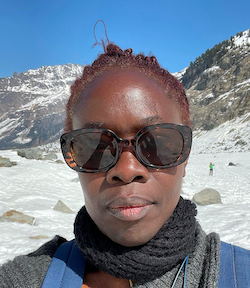Arwa Tizani was one of the first employees at Elon Musk’s Boring Company, as Lead Civil Engineer for several years, moving on to co-direct the Hyperloop and Not-A-Boring Competitions. She is now the Infrastructure Project Manager at at Relativity Space—where the mission is to design, build, and launch 3D printed rockets(!).
Adrian Glauser of ETH Zurich, for the past two decades, has been instrumental to the design, development of one of the world’s largest telescopes. The James Webb Space Telescope, developed by NASA, is the most powerful device of its kind ever launched into space. With its infrared capabilities and sensitivities, it promises to reveal the secrets of the past and future of our cosmos.
There is an interesting contrast between camps:
NASA is an iconic US institution - that has fired the global imaginations of young and old ever since that first televised “giant leap for mankind” was beamed back from the moon landing. It stands for space exploration, and adventure, but it also, as a government agency, must rely on conventions and protocols - bureaucracies in fact - for its day to day functions. When we think of NASA, a holistic image of astronauts, ground control, clean up crews, research teams, is readily invoked. A mosaic of teamwork at every level drives those missions to Mars and beyond. The James Webb Space Telescope is named not for an inventor, but rather one of NASA’s most fervent cheerleaders, Jame E. Webb, the administrator who oversaw the Mercury, Gemini, and Apollo programs in the 1960s. At the other end of the spectrum is the Elon Musk, a maverick billionaire who exemplifies individualistic vision. He is the mind behind the trailblazing enterprises: Tesla, Space-X, Hyperloop, The Boring Company… In fact it is his visage that comes to mind at their mention - because they appear to be powered by his vision. Or are they? The ensuing conversation between Tizani who has been professionally affiliated with Musk’s companies (and personally inspired by his vision), and Glauser, who has worked as part of NASA teams for over twenty years parses similarities and differences in these distinct cultures of innovation.




